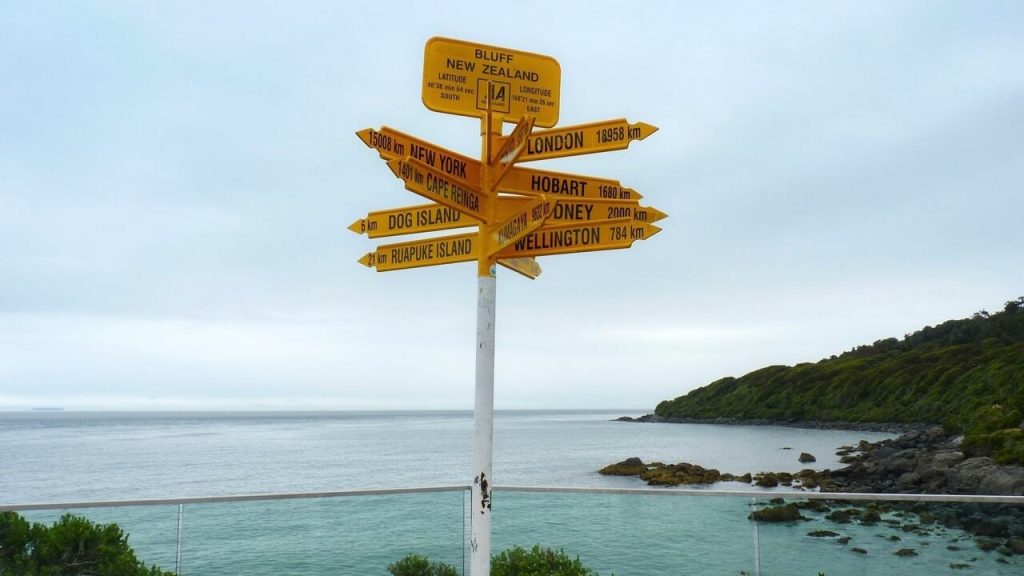
In New Zealand, Bluff, one of the southernmost ports in the world
Posted in:
Head to the Deep South to watch this new episode on Ports of the World. Latitude -46 degrees, southern storms and extreme conditions: Bluff, in New Zealand, faces Antarctica and its fickle weather. Set apart from the rest of the world, the port was nonetheless one of the first departure points for European settlers at the beginning of the nineteenth century.
From our New Zealand correspondent,
at the end of state highway 1the road that connects New Zealand From north to south, the path ends at Sterling Point, the last landmark before civilization fades, giving way to the Southern Ocean that reveals the remoteness of the first Antarctic coasts. Expression ” the end of the world Which can sometimes be overused, takes on its full meaning here. Under a constantly overcast sky, Bluff and its homes have been eroded by wind and weather, giving the impression that they are deserted.
killer water
However, there are still approximately 2,000 residents in this city. Most of them are sailors who have to deal with the unpredictable conditions of the oceans. In this storm a voice reassures them. That’s from Mary Leske. For nearly 40 years, she has been advising and monitoring boats sailing off the south coast of New Zealand on a daily basis. ” I live in the port. So when the fishermen go out, they walk by my door. I have an HF radio and a VHF radio and never leave the house without a portable radio in my bag “, as you say.
Round the clock monitoring is essential, as the waters of Southland, where Bluff is located, are the deadliest. The number of people missing at sea is twice the number of people in the rest of the country. ” Twice a day report weather conditions and forecasts. I check all boats leaving port, even those headed to Antarctica or the Chatham Islands. This is very important for families staying on the beach. Because everywhere here, when the winds start to come down and the conditions at sea change, they can get into serious problems and we’ve had some really serious situations. If I hear that conditions are changing, I tell the fishermen to go straight back, or if it is too bad, to find a coast as close as possible. ‘, she explained.
Role in the Napoleonic Wars
If Port Bluff is now moved by fishing boats and various cargo ships, it was nonetheless a strategic point during the Wars of the Alliances more than two centuries ago. Michael Stevens is a historian born in Bluff. He tells how the port witnessed the arrival of the first European ship, after the Treaty of Tilsit, an agreement between Napoleon and Russia to block the British Empire:
” During the first decade of the nineteenth centurye century, Napoleon banned all Russian cannabis resources from going to the British. Until that time, the British depended entirely on the Russians for this strategic resource for the manufacture of mooring lines and sails for boats. So this large British colonial ship came from Australia, which was at the same time in Bluff Harbour, to investigate the qualities of New Zealand flax plantations. In particular to assess its quality and see if it can replace European hemp. I think it shows that despite his isolation, Bluff has always been in touch with the rest of the world. »
A few years later, the British ships would come this time with the first European settlers. Traders, whalers and even fishermen join the indigenous people of New Zealand, the Maori, in this region so rich in natural resources.
” It is the closest port to a large convergent area, and is one of the only places in the world where the cold waters of Antarctica mix and the warm waters of the Pacific Ocean and provide a very productive sea. There is certainly a lot of wind and rain, which is not hospitable to men. But there are a large number of whales, seals and fish. These marine resources are present here in large numbers. So this rich environment attracts people, first the Polynesians and then the first wave of Europeans who are mostly whalers. Bluff is one of those places in the world where nature guides, in a sense, human culture. »
► Read also: A study warns that the sea level in New Zealand is rising faster than expected
From this culture was born one of New Zealand’s treasures: the Fufu Strait oysters. Located between Bluff and Stewart Island, this 150-year-old oyster farm is one of the last natural oyster beds in the world. Between March and August, Graeme Wright and his teams harvest more than one million oysters each year. Here, there is no shore breeding, but a fleet of eight boats.
” The depth of oysters ranges from 30 to 50 meters. Harvesting can only be done by shoveling and it always depends on the weather. We often have southern storms with waves of 6-10 meters, but also high tides, because it is a very small strait, not to mention the southern winds in this part of the world, so it is not always accessible! But it’s those deep, flowing Antarctic waters, and nutrient-rich waters, that make our oysters unique. Unique. Just like the emotion that captivates us when leaving Bluff. A bustling harbor full of life yet so far from the rest of the world. The last civilization before the first ice floe and the frozen desert of the Antarctic.

“Reader. Travel maven. Student. Passionate tv junkie. Internet ninja. Twitter advocate. Web nerd. Bacon buff.”
